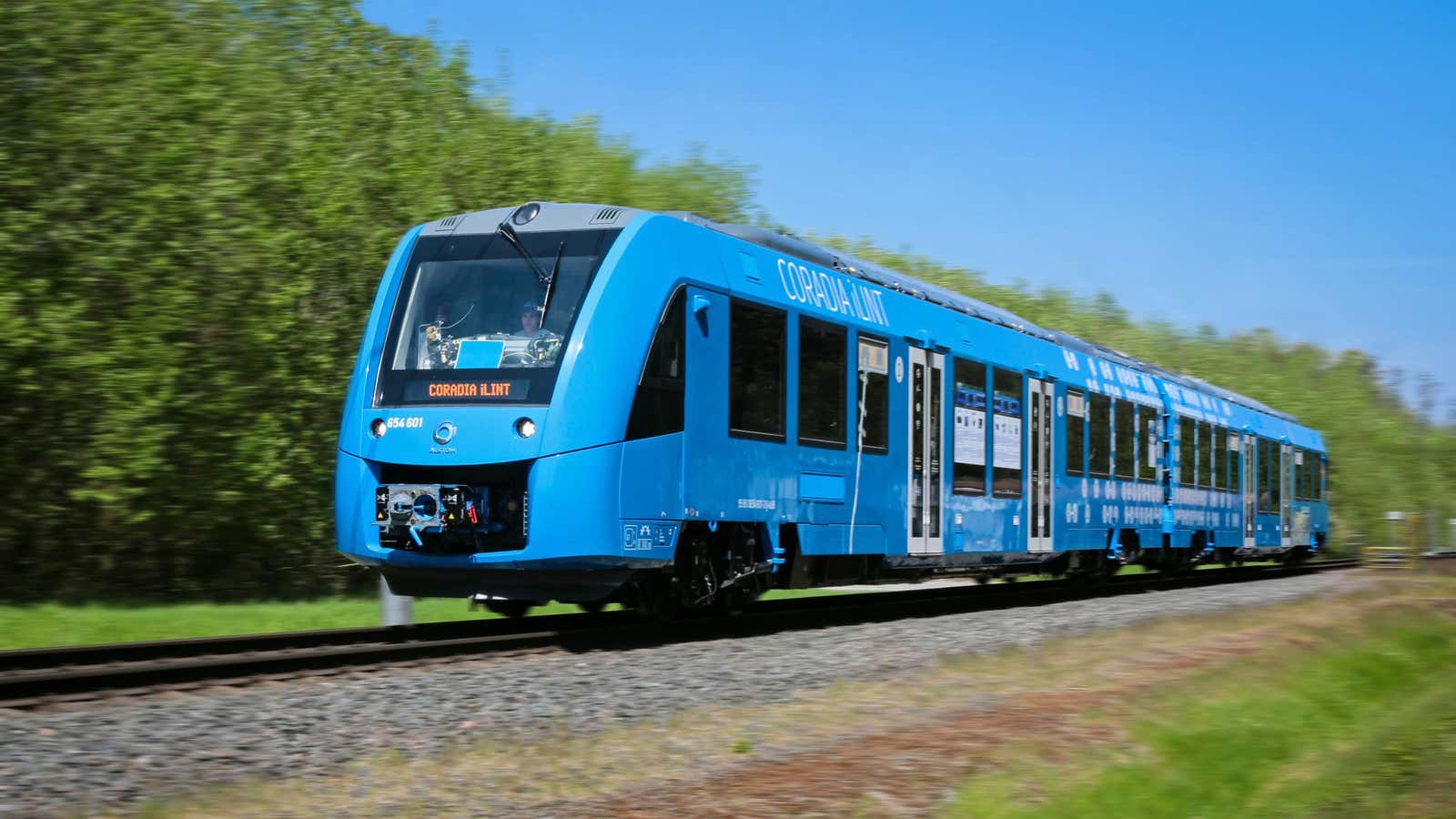In a world worried about climate change, hydrogen is a magical fuel. It has all the features of natural gas: it’s a fuel that’s easy to access, transport, and burn. And unlike natural gas, when you burn hydrogen, you only get water—no carbon dioxide. It’s the reason why, as the world continues to fail to hit climate goals, it turns back to hydrogen time and again.
The latest example is the world’s first noise-free, zero-emissions, hydrogen-powered train running about 100 km (about 60 miles) between Cuxhaven and Buxtehude in Germany. Built by the French multinational rail company Alstom with funds from the German government, the train can run at a maximum speed of 140 km per hour (about 90 miles per hour) for about 1,000 km on a full tank of hydrogen.
Currently, most train routes in the world run on diesel, which doesn’t just produce carbon dioxide but a lot of particulate pollution too. You might argue that, instead of burning diesel, why not electrify these routes, and power them with wind or solar? After all, we already do have some trains that run efficiently on electricity.
And it does indeed make sense to do that in many cases. But there are edge cases, such as that of Cuxhaven and Buxtehude, a route that runs from the North Sea to just outside Hamburg, where building the necessary electric infrastructure is prohibitively expensive. That may be because the location is too far from an electric grid or because the line will run too infrequently to recoup the investment needed. Alstom estimates that electrifying a railway line costs around €1.2 million ($1.4 million) per km.
One other option to run zero-emission trains would be to power them on batteries instead of using electricity from the grid. Here, however, physics becomes a problem. Batteries are bulky. They may be efficient at transporting four or six people in a car, but moving hundreds in a train is much harder. The heavier the train becomes, the more batteries it needs to move; the more batteries we add, the heavier the train becomes.
That may change if batteries are able to pack more energy for the same weight. Until then, the next-best option is hydrogen-powered fuel cells.
There’s just one problem: hydrogen doesn’t have the ready supply chain of diesel. Over the past century, we’ve built out a large infrastructure to produce and transport diesel, and we’ve designed ever-better diesel engines. To use hydrogen at the same or lower cost, we will need to build a similar network.
Currently, the cheapest way to produce hydrogen is from natural gas. In large reactors, natural gas is exposed to high-temperature steam to produce hydrogen and carbon dioxide. Using this hydrogen to run the train defeats the purpose somewhat. The new train itself may be zero emissions at the point of use because it only produces water and no particulate pollution. But the hydrogen supply chain doesn’t entirely eliminate greenhouse gases.
The hope is that, as the use of hydrogen becomes widespread, the technology to produce hydrogen from water (essentially reversing the reaction occurring inside the train) by using renewable electricity coming from wind, solar, or nuclear power will become cheaper. Alstom has an order to build 14 more such trains across Germany. Other countries, including France, Denmark, Norway, Italy, Canada, the Netherlands, and the UK are all looking into hydrogen trains.
Just like the steam-engine kickstarted the age of coal, the German train could just kickstart the age of hydrogen.
